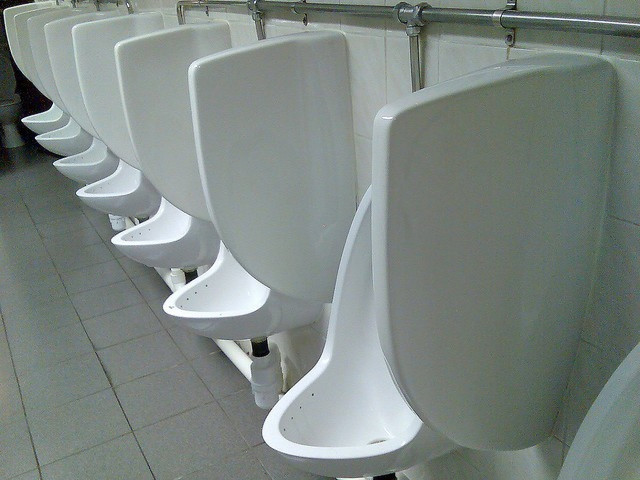Urine Stream Shape Can Help Diagnose Prostate Problems: Study

Men may want to be extra-attentive in the bathroom, scientists say – and we're not talking about just making sure your zipper's closed.
British scientists from the University of Southampton, Queen Mary University of London and Newham University Hospital have found that the shape and pattern of a man's urine stream could be used to diagnose prostate problems and other urinary conditions.
In a paper published in the journal PloS ONE, the researchers found that simply measuring the shape of a man's urine flow could predict his maximum urine flow rate, which is important when detecting problems associated with prostate enlargement.
The shape of a man's urine stream is affected by the conditions of the meatal opening – the point at the tip of a man's penis where the urethra ends and urine exits. As he begins to urinate, the pressure causes the meatus to open quickly, but the pressure drops as he relieves himself, causing the opening to close again. The variation in the size of the opening can alter the wavelength of the urine stream.
In addition to modeling the fluid dynamics of urine streams with mathematics, the scientists asked 120 men – 60 healthy volunteers and 60 patients with urinary problems – to record the maximum wavelength of their urine stream while urinating into a flow meter.
They found that the healthy volunteers' self-estimations of their urine streams flow shapes provided an accurate estimation of peak flow rate. For the patients with urinary problems, the relationship between urine stream shape and flow rate suggested that their meatal opening was not properly opening as much as a healthy person's.
“Although it is unclear for how long such an effect might persist, our data is supported by clinical experience which suggests that certain patients may benefit from surgical dilation of the urethra in order to regain a normal flow rate,” the authors wrote.
Prostate enlargement happens to most men as they age, and can cause urinary problems as it begins to press on the urethra. Enlargement of the prostate is not necessarily a sign of cancer, but the urinary problems it causes can warrant treatment with medication or surgery.
Current techniques for measuring urinary flow rate, “although very accurate, are difficult or expensive to use reliably outside of the clinic,” author and Queen Mary University researcher Martin Knight said in a statement Wednesday. “This new approach may therefore represent a useful solution to this important medical engineering problem, allowing men to easily monitor their urine flow rate."
SOURCE: Wheeler et al. “The Shape of the Urine Stream – From Biophysics to Diagnostics.” PloS ONE 7: e47133, 16 October 2012.
© Copyright IBTimes 2025. All rights reserved.





















